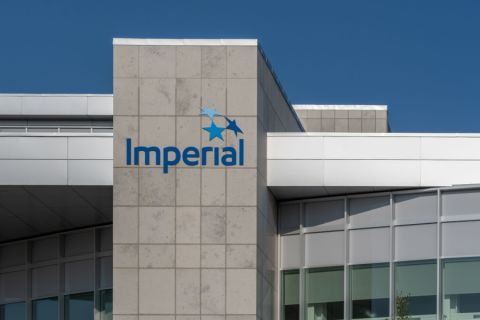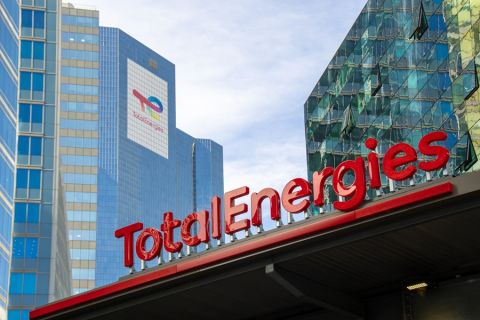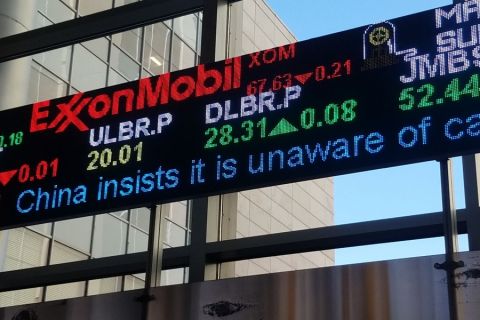
Louisiana is pursuing state authority over CCS injection well permits from the Environmental Protection Agency (EPA), a status known as primacy. Only two other states, North Dakota and Wyoming, have been granted primacy by the EPA. (Source: Shutterstock.com)
In the last days of June, Louisiana made legislative progress to support and expand carbon capture and sequestration (CCS) within its borders.
Louisiana is pursuing state authority over CCS injection well permits from the Environmental Protection Agency (EPA), a status known as primacy. Only two other states, North Dakota and Wyoming, have been granted primacy by the EPA.
To that end, the state has recently enacted legislation tightening existing CCS laws. In April, the EPA signaled it is open to granting the state primacy.
Still, Louisiana has been juggling its legislative efforts with some local opposition to CCS projects, mostly over landowner objections — although signs point to that resistance fading following legislative changes.
Most recently, the state’s Department of Natural Resources (DNR) held three days of joint public hearings with the EPA from June 21 to June 23 as part of the initiative for Louisiana to be granted primacy in issuing Class VI injection-well permits. If all goes well, that primacy could be granted by the end of the year.
On June 14, Louisiana Gov. John Bel Edwards signed into law House Bill 571, now Act 378, which makes several enhancements and modifications to existing state laws governing CCS. Notably, Act 378 adds environmental analysis requirements and significantly lengthens the liability of operators to 50 years from 10 years after the last injection. It also increases some fees and record-keeping requirements. The act was an important advance for CCS since it became law while eight other bills, all intended to deter CCS in Louisiana, stalled.
Louisiana has been a center of CCS development due to its density of hydrocarbon industries and other heavy emitters of CO2 in rare proximity to extensive geological formations suitable for sequestration.
Most recently, Denbury formed a joint venture with Lapis Energy for a CCS project at Lapis’s 14,000-acre carbon storage site in St. Charles Parish. The site has the potential to store at least 200 million metric tons (MMmt) of CO2.
Early in June, Exxon Mobil announced it “will capture, transport and store up to 800,000 metric tons per year of CO2 from Nucor’s manufacturing site in Convent, Louisiana. The site produces direct reduced iron, a raw material used to make steel.”
The Exxon arrangement with steelmaker Nucor Corp. is the third carbon-capture agreement Exxon has made in the past seven months, following similar plans with industrial-gas company Linde, and fertilizer maker CF Industries. Under the three agreements, Exxon has agreed to transport and store a combined 5 million metric tons per year.
The Nucor project, expected to start up in 2026, will tie into the same CO2 transportation and storage infrastructure as CF Industries. Exxon holds firm commitments for 3.2 million tons per annum of transportation capacity with EnLink Midstream. EnLink is in the process of converting a legacy, large-diameter natural gas pipeline and building a greenfield, supercritical phase CO2 line for downstream connectivity to Exxon’s sequestration field in Louisiana’s Vermilion Parish.
CCS opposition
The new regulatory framework under Act 378 could be a model for other states, suggested Colleen Jarrott, partner at the law firm of Hinshaw & Culbertson, based in New Orleans. “We have been doing CCS in Louisiana since 1982,” she said. “For most of that time it was primarily for enhanced oil recovery, but we have decades of experience.” She further noted the CO2 injected for EOR stayed in the formations with no environmental impact.
And while the legislation is not directly a requirement of state primacy for injection wells, it may demonstrate responsible state-level regulation.
“DNR has a good working relationship with EPA Region 6,” Jarrott said. “The two agencies already have a memorandum of understanding (MOU). EPA has asked for some tweaks to state regulations–for example, the extension of operator’s limited liability from 10 to 50 years–and DNR has been making other changes.”
The original MOU was signed in 1982 and has undergone several revisions, most recently in March 2023.
Act 378 had to overcome significant opposition, primarily from Livingston Parish, east of Baton Rouge, and from some other rural areas. Livingston Parish had put a moratorium on CCS, which led to a federal lawsuit that was decided in favor of a CCS project developer (Air Products Blue Energy v. Livingston Parish). Representatives from some of those districts introduced eight bills in competition with House Bill 751.
According to an overview by Hinshaw & Culbertson, “the passage [of House Bill 751] shows that Louisiana is serious about its commitment to carbon capture and sequestration development. The fact that eight of the nine bills were defeated in committee or on the House Floor—all of which were aimed at deterring future CCS projects—is significant.”
The opposition in the field and legislature was driven in part by resistance to the expropriation feature — essentially eminent domain — allowing CCS projects to proceed over the opposition of landowners.
Jarrott said there was an initial lack of CCS information available to the public, but that the situation has significantly improved. There has also been a groundswell of support.
“There were concerns that opponents of CCS would show up in force at the primacy hearings,” Jarrott said. “They did not, but who did come out were people from Lake Charles and Homa, areas that are experiencing wetlands erosion, to support CCS. The hunters and the fishers who are seeing the effects of climate change on the environment came out to support CCS.”
According to the summary by Hinshaw & Culbertson, Act 378 “provides [that] additional notice be provided to local governments in advance of future CCS projects. It also allows for certain revenue sharing between parishes and the state for CCS projects on state-owned land.”
CCS reporting beefed up
The act has new reporting and record-keeping requirements for owners and operators of permitted Class VI wells, including quarterly reports regarding characteristics of the CO2 stream and other related data. Also, the operator must provide notice within 24 hours to the state’s Commissioner of Conservation of any noncompliance, malfunction or failure relating to CCS operations.
A new environmental analysis requirement was also included, with questions including:
- Does a cost-benefit analysis of the environmental impact costs versus the social and economic benefits of the proposed activities demonstrate that the latter outweighs the former?
- Are there alternative activities that would offer more protection to the environment than the proposed activity without unduly curtailing non-environmental benefits?
- Are there alternative sites which would offer more protection to the environment than the proposed site without unduly curtailing non-environmental benefits?
- Are there mitigating measures which would offer more protection to the environment than the proposed activity without unduly curtailing non-environmental benefits?
Recommended Reading
NOG Lenders Expand Revolving Credit Facility to $1.5B
2024-04-30 - Northern Oil and Gas’ semi-annual borrowing-base redetermination left its reserved-based lending unchanged at $1.8 billion.
Imperial Oil Names Exxon’s Gomez-Smith as Upstream Senior VP
2024-04-30 - Cheryl Gomez-Smith, currently director of safety and risk at Exxon Mobil’s global operations and sustainability business, will join Imperial Oil in May.
Diamondback Stockholders All in for $26B Endeavor Deal
2024-04-29 - Diamondback Energy shareholders have approved the $26 billion merger with Endeavor Energy Resources.
TotalEnergies Eyes Suriname FID by Year-end 2024
2024-04-29 - France’s TotalEnergies and U.S. partner APA Corp. look to place their long lead orders ahead of a final investment decision related to their joint development offshore Suriname in Block 58.
ProPetro to Provide eFrac Services to Exxon’s Permian Operations
2024-04-29 - ProPetro has entered a three-year agreement to provide electric hydraulic fracturing services for Exxon Mobil’s operations in the Permian Basin.





